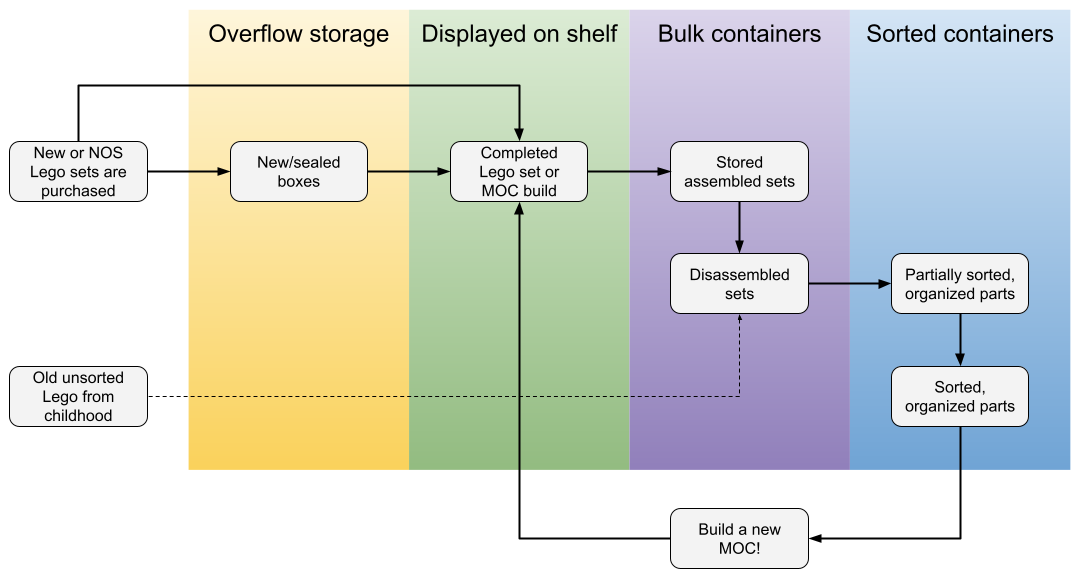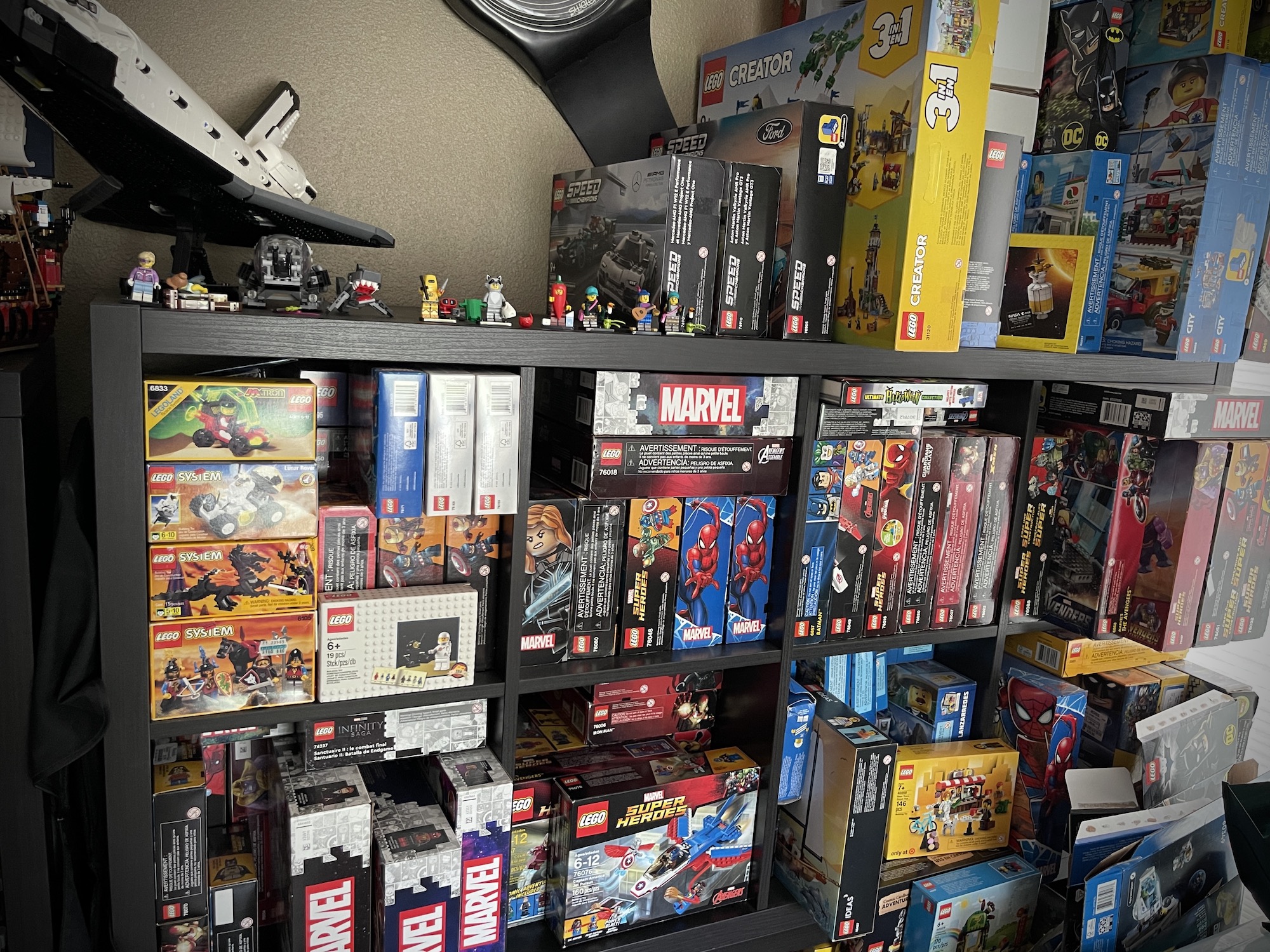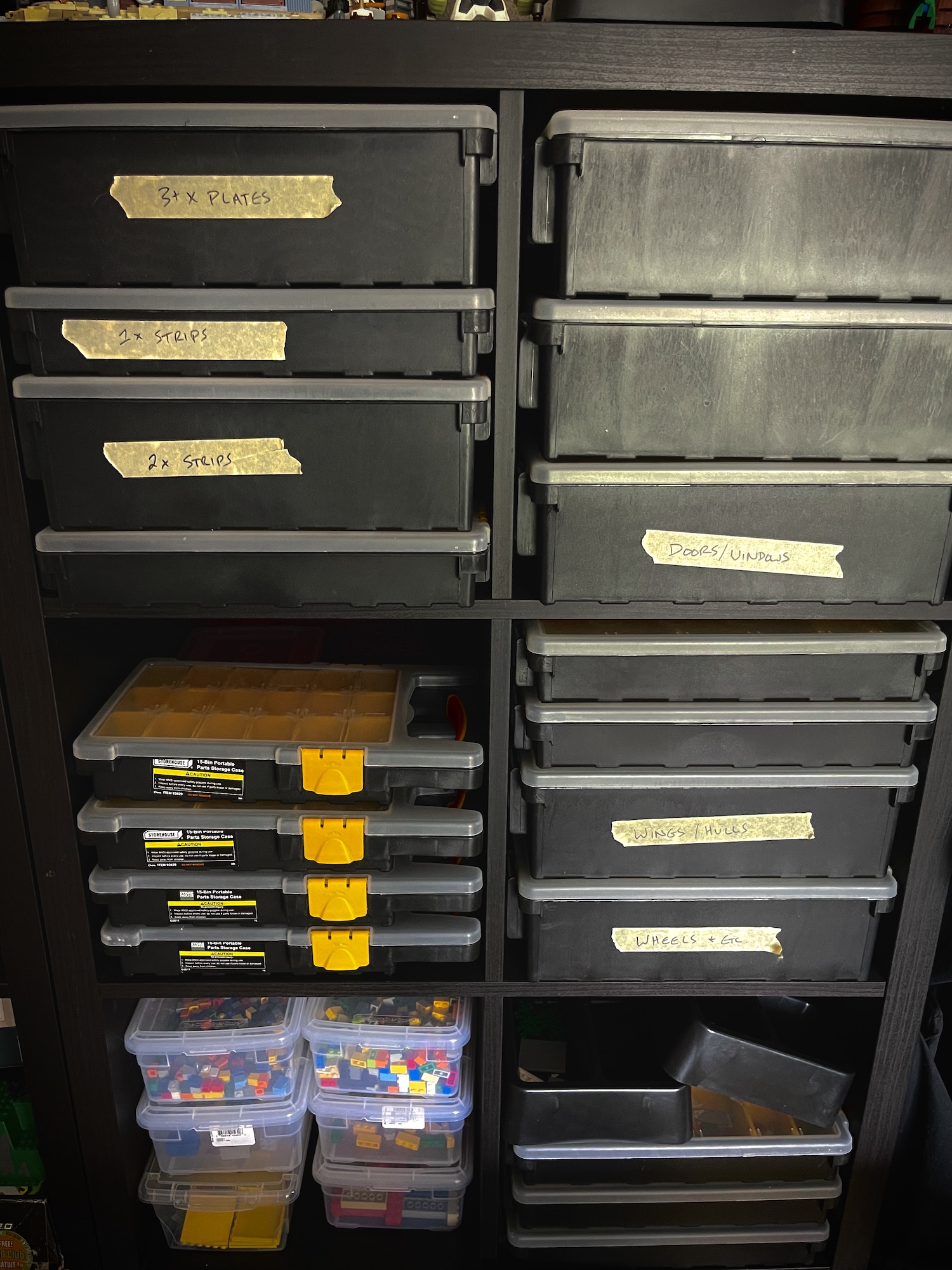Whenever I talk to people about my Lego collection, I’m frequently asked what I do with it, especially since I buy so may new and new old stock (NOS) sealed sets. So, to address those questions and provide a more visual explanation, I’ve written this blog post to explain the lifecycle of sets and parts in my Lego collection.
Lego Sources
Lego sets/parts enter my collection in one of three ways:
- New and sealed sets (current or NOS) which I buy
- Used sets or parts which I buy
- Bulk parts from my childhood collection
Most of my collection, at least in recent years, comes from new and sealed sets. I buy very few used sets or parts and most of my childhood collection has already been sorted and stored as organized parts.
Various States of Lego
Once I have those sets in my collection, they move through a series of states in their lifecycle with me. However, how long they spend in each state is determined by the set, what I want to do with it, and how much time I have available for building, decomposing, and sorting/organizing. Those states include:
- New, sealed sets which I have not yet built
- New, sealed sets which I will never open because they are more valuable to me (not necessarily for resell) as sealed sets
- Built sets on display that are based on Lego instructions or My Own Creations (MOCs)
- Built sets stored in bins, but not yet broken down
- Broken down, unsorted parts which are ready for sorting
- Sorted parts which are ready to be built into new MOCs
The order of that list is somewhat indicative of the lifecycle of sets and parts within my collection, but let’s dig into the lifecycle in more detail.
Lifecycle

Looking at the diagram above, you can see the flow of sets from new purchases all the way to sorted/organized parts ready for building again.
Childhood Lego Collection
First, let’s cover my childhood collection because that’s the simplest flow. All of the Lego from my childhood was in large bins and completely disorganized. It was even mixed in with my son’s Lego parts when he was no longer interested in it. Those large bins of mixed, unsorted, disorganized Lego bricks went right into ready-for-sorting.
[Photo of bins?]
Overflow Storage for New and NOS Sealed Sets
When I buy new sets, either current or NOS, they often do not get built immediately. Sometimes I’ll build them right away, but usually they will find their home on a set of shelves on which I store sealed sets. I have the intent to build most of these sets someday, but a few will never be built and are displayed as sealed boxes.

Built Sets Displayed on Shelves
Once sets are built, I like to display them on shelves so I can enjoy them for a while. Some are on open shelves, but I try to keep most sets in glass cases/cabinets so I don’t have to deal with dusting the sets. The period of time which sets live on my shelves varies based on the size and how much I enjoy them.

Sets Stored in Bulk Containers
Once I’ve decided that I’m done enjoying Lego sets on shelves, I may not be quite ready to disassemble them, so they go into bulk bins while remaining fully intact.

Parts Stored in Sorted Containers
I sort parts by type first, then sometimes subtype (if applicable), and then color, although I have yet to reach a state of organization where I need to sort by color.
I know a lot of people use Akro-Mils storage containers, like this one, but those are a little more money that I prefer to spend on Lego storage. Also, they don’t seal for portability. I prefer to use these storage bins from Harbor Freight:
- Storehouse 8 Bin Large Portable Parts Storage Case
- Used for larger parts or larger quantities
- Storehouse 20 Bin Medium Portable Parts Storage Case
- Used for medium parts or medium quantities
- Storehouse 15 Bin Small Portable Parts Storage Case
- Used for small parts or small quantities

You might be thinking that those containers require more work to find and open the case than the Akro-Mils sets that many other people use, which is true. However, this allows me to move and transport these bins much more easily. I know I’ll be moving to another house at some point and the idea of many unsealed bins of Lego bouncing around in the back of a moving truck is a horrifying nightmare for me. I’m already anxious about the idea of moving my Lego and music gear to another house, so being able to ensure that my organized parts bins are easy to move is a small trade-off for the extra time it takes to open the containers. Plus, I use labels to help easily find the right storage containers.
Ready for More Fun
Once my parts are sorted and organized into labeled containers, they are ready to be reused for new MOCs.
